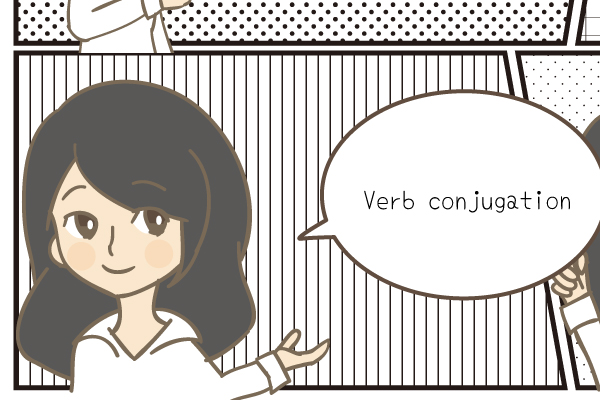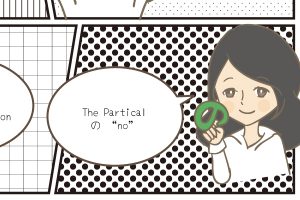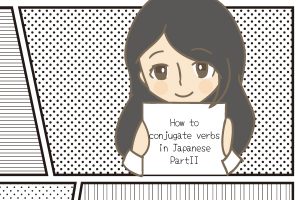How to conjugate verbs in Japanese Part Ⅰ
In the last lesson, Shiho revised some of her introduction to Japanese adjectives and showed you how to express adjectives in Japanese in the past tense. Do you remember the two ways to use “良かった”?
In this lesson, Shiho will give an introduction to conjugating verbs in Japanese.
| Table of Contents [Introduction] [Three verb groups] [Conjugation forms] [About the three verb groups] |
[Introduction]
In this lesson, we will take a look at how to conjugate verbs according to Japanese grammar rules. Again, there are many mistakes to make with Japanese verb conjugation, especially when your mother tongue is a Western language (where verb conjugations are fundamentally different) or does not have verb conjugations in the first place. However, verb conjugations are part of the foundation of the Japanese language, so the earlier you can master this topic, the better!
[Three verb groups]
Japanese verbs can be divided into three different groups. Depending on the group they are classified in, their conjugation works a little bit differently, so it’s important to be able to distinguish between these three groups. The three groups are:
Group ① = u-verbs
Group ② = ru-verbs
Group ③ = irregular verbs
[Conjugation forms]
Verbs can be conjugated into the “辞書形”, “マス形”, and the “ナイ形” (among others).
辞書形: This is the “dictionary form” of a verb, or its “original”, basic form. In English, it is comparable to a verb’s infinitive form.
マス形: A verb’s polite form.
ナイ形: A verb’s negated form.
[adsense]
[About the three verb groups]
Every verb group has some different rules on how to conjugate them. Let’s take a look at every group and solidify your understanding by using examples.
1) Group ③: Irregular verbs
Verbs belonging to this group are “来る” and “する”. These forms are the “辞書形” (dictionary form) or “infinitive” of these two verbs. These verbs are irregular, so there is no rule for their conjugation. You will need to learn their conjugated forms by heart.
マス形:
来る→来ます
する→します
ナイ形:
来る→来ない
する→しない
Note how even though the “漢字” for “来る” stays the same, the reading changes depending on the conjugated form. Please see the Furigana for reference.
2) Group ②: Ru-verbs
Examples for verbs belonging to the ru-group are “見る” or “食べる”. Again, these forms are the “辞書形” (dictionary form) or “infinitive” of these two verbs. Both of these verbs end on the syllable “る”, which makes them part of the ru-group.
When conjugating ru-verbs, you take off the “る”-ending of the verb and add the endings of the form you’d like to conjugate the verb into. See the examples in the Masu- and Nai-forms.
マス形:
見る→見ます
食べる→食べます
ナイ形:
見る→見ない
食べる→食べない
As you can see, you simply omit the “る” and add either “ます” or “ない”.
Other examples for verbs belonging to the ru-group are “着る”, “聞こえる”, “考える”, “いる” – can you conjugate them to their respective Masu- and Nai-forms?
(See video for correct answers).
3) Group ①: U-verbs
The U-verb group is the biggest of the three verb groups and most Japanese verbs belong to this group. But just like for the ru-verbs, there are rules for conjugating u-verbs. Let’s take a look at this group with the examples “行く” and “買う”.
Those are the “辞書形” (dictionary form) or “infinitive” forms of these two verbs. They belong to the u-group because they both end on the letter “u”. When conjugating verbs of this group, only the “u”-sound is lost in the conjugation – any accompanying consonants are adjusted depending on the conjugated form.
マス形:
行く→行きます
買う→買います
As you can see for u-verbs you actually have to change the dictionary form in order to conjugate it. When conjugating to the Masu-form, the “u” is replaced by “i” including any consonants if present. Hence, “行く” changes to “行き+ます”. “買う” doesn’t have a consonant, so it changes from “買う” to “買い+ます”.
ナイ形:
行く→行かない
買う→買わない
Again, you have to change the dictionary form before adding the “nai”-ending to the verb. When adding “nai”, the sound is changed to “a” including any consonants: “行く” changes to “行か+ない” and “買う” changes to “買わ+ない”. Notice how for verbs ending only on “u”, the the “u”-sound is changed not just to “a”, but to “wa” for easier pronunciation.
Other examples for verbs belonging to the ru-group are “話す”, “読む”, “飲む” and “持つ” – can you conjugate them to their respective Masu- and Nai-forms?
(See video for correct answers).
In this lesson we reviewed the very basics of verb conjugations in Japanese. In the following lessons on this topic we will look further at exceptions as well as more complicated conjugation patterns.
Don’t forget to check out the video on this class and tune in to our livestream every wednesday at 6pm (JST) for the real deal!
| 動詞 | Verb |
| 活用 | Conjugation, practical use |
| 形 | Form, shape |
| 変え方 | Way to change something |
| 基礎 | Basis, foundation |
| 基本的 | Fundamental |
| 理解する | Understand |
| 来る | To come |
| する | To do |
| 見る | Order (of things) |
| 食ベる | To eat |
| 行く | To go |
| 買う | To buy |




